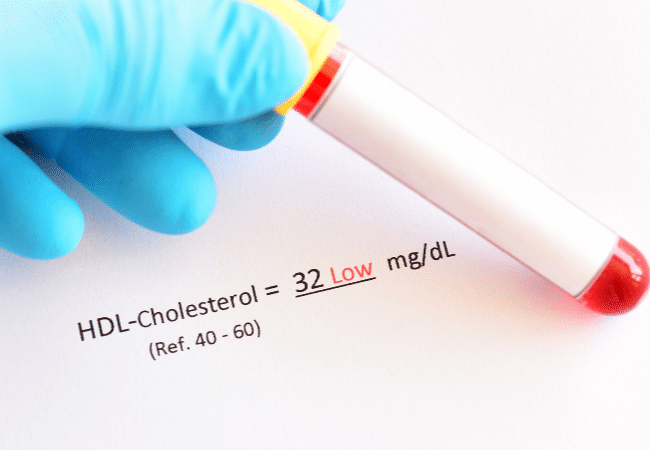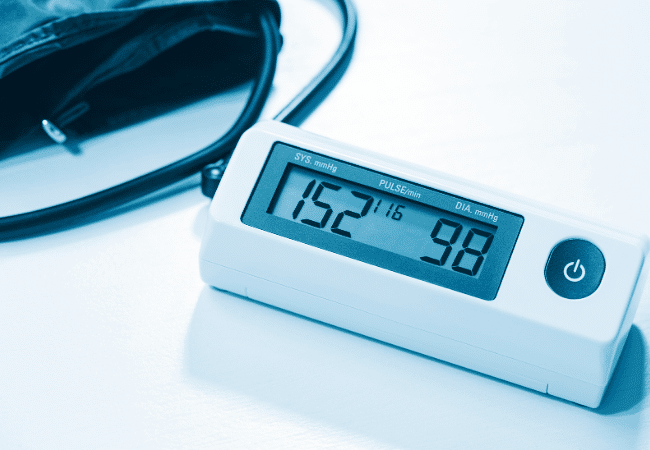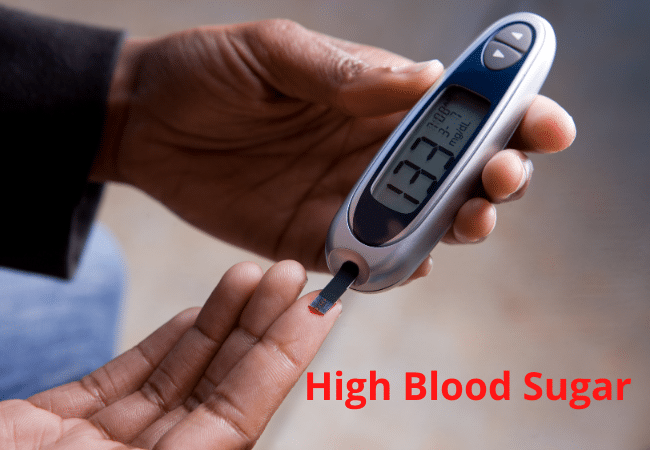February is a heart-centric month. Valentine’s Day reminds us to nourish our relationships. And February is American Heart Month, reminding us that we also need to nourish and support our physical heart in healthy, loving ways.
Unfortunately, heart disease remains the #1 cause of death in the U.S, accounting for 659,000 deaths annually, as well as 18.6 million deaths, globally.1, 2 The number of adults (aged 18 and older), with diagnosed heart disease is 30.3 million, according to the Centers for Disease Control (CDC).3 No one is immune. Everyone, including children, can develop heart disease.4
The good news? We can be proactive about our heart health—at any age—by optimizing our metabolic health.
Did you know…only 12% of American adults, aged 20 and over, are metabolically healthy?! Even among American adults, who are of normal weight, the prevalence of metabolic health is low.5
The idea of metabolic health is often misunderstood as having a “fast metabolism”; or being at a “normal” weight. Not so. Because optimal metabolic health is vital for heart health, let’s look at the difference between “metabolism” and “metabolic health”.
Metabolism vs. Metabolic Health
Like the engine that keeps your car running smoothly, “metabolism” refers to the full range of biochemical reactions that take place in your body, keeping you alive, lean, healthy and functional—in other words, “running smoothly”. Your metabolism is always responding—and adjusting—to inputs from the outside world: food, sleep, stress, movement, environmental toxins, alcohol, medications, etc. Your metabolism “receives” this information (from the outside world) through your hormones. So, in order to balance your metabolism, you must first balance your hormones.
For example, chronically high levels of the stress hormone cortisol slows thyroid function, which affects metabolism and can manifest as weight gain. Heart disease risk often escalates at midlife. This coincides with andropause (male menopause) and menopause, a time when hormones that have heart health-protective benefits, like testosterone (men) and estrogen (women) drop, leaving men and women more vulnerable to heart disease.
Studies have shown that low testosterone levels in midlife men can lead to more body fat, especially around the midsection, raising heart disease risk.6 Optimal testosterone levels regulate fat metabolism in men.7, 8, In women, estrogen, specifically estradiol, helps regulate metabolism and weight; low levels of estrogen, particularly after menopause, can contribute to overall weight gain and at the waist and abdomen; excess visceral (deep, abdominal) fat is linked with increased risk of heart disease.9
Your “metabolic health” reflects the overall health of your cells in a wide range of biological functions. The 5 key indicators of metabolic health are 1) waist circumference; 2) triglycerides; 3) HDL (“good” cholesterol); 4) blood pressure and 5) blood glucose levels—without the use of medications.
Metabolic Syndrome
Poor metabolic health can lead to “metabolic syndrome”, a group of risk factors that raise your risk of heart disease, stroke and diabetes. You will be diagnosed with metabolic syndrome if you have 3 or more of the following risk factors which, in turn, increases your risk of heart disease.10 Each risk factor (below) is defined by conventional medical lab ranges.
3 or More of these 5 Risk Factors = Metabolic Syndrome
 1. Large waist size.
1. Large waist size.
This indicates excess body fat around the waist.
–For men: 40 inches or larger
–For women: 35 inches or larger
According to the January 2021 National Center for Health Statistics (NCHS) report:
–Average waist circumference for women, aged 20 and older: 38.7 inches
–Average waist circumference for men, aged 20 and older: 40.5 inches.11
The latest NCHS statistics show that the average American waist circumference (inches)—for every age group and for both sexes—is considered “large”, indicating excess body fat:12
WOMEN MEN
Age Waist _ Age Waist
20-29 —» 36.2 inches 20-29 —» 37.0 inches
30-39 —» 38.2 inches 30-39 —» 40.4 inches
40-49 —» 39.2 inches 40-49 —» 41.0 inches
50-59 —» 39.3 inches 50-59 —» 41.4 inches
60-69 —» 40.0 inches 60-69 —» 42.2 inches
70-79 —» 40.0 inches 70-79 —» 42.3 inches
80-plus —» 38.7 inches 80-plus —» 41.1 inches
2. High triglycerides.
Your triglycerides are 150 mg/dL or higher OR You are using a cholesterol medicine.
3. Low HDL “good” cholesterol.
–For men: Your HDL is less than 40 mg/dL
–For women: Your HDL is less than 50 mg/dL
4. High blood pressure.
Your blood pressure is 135/85 mm Hg (or higher) OR you are using high blood pressure medication.
5. High fasting blood glucose.
You have pre-diabetes if your blood glucose level is between 100 and 125 mg/dL.
You will be diagnosed with diabetes if your fasting blood glucose is 126 mg/dL or higher.
Hemoglobin A1C blood test (a.k.a., A1C or HbA1c) measures your average blood sugar levels over a period of 3 months. This is another important number to know. According to conventional medical lab ranges:
HbA1c of 5.7% to 6.4% = Pre-Diabetes
HbA1c of 6.5% or greater = Diabetes
What it means and why it matters
You know the risk factors. But how exactly does it affect your heart disease risk?
1. Large Waist size
Waist circumference can tell you a lot about your heart disease risk. Even if your BMI is less than 25, and you are at a “normal” weight, having excess fat around the waist (a.k.a. central adiposity) can raise your risk of high blood pressure, high cholesterol, type 2 diabetes and heart disease.13, 14
Studies have shown that it is not just general overweight/obesity that increases risk of heart disease—it is where that fat is stored on the body. According to a study published in the Journal of the American Heart Association, when researchers tracked the lifestyle, environment and medical history, including body measurements, of study participants, aged 40-69, over seven years, they found that higher waist-to-hip ratio (larger waist size) is strongly associated with greater risk of heart attack in both men and women, especially women.15
2. High triglycerides.
Triglycerides are a type of fat found in the blood. Most triglycerides are made by your body from carbohydrates, including sugar and flour-based foods (like diet soda, breads, pasta, etc.), refined and processed starchy carbs (think store-bought cookies, cakes, snack foods and French fries) and alcohol.
According to cardiologist Dr. William Davis, author of Wheat Belly and the Undoctored blog, your triglyceride level conveys important information. The optimal triglyceride level is 60 mg/dL or less.16 Triglycerides are a good marker of carbohydrate intake. High triglycerides of, say, 180 mg/dL, suggest that you are overconsuming carbohydrates. Triglycerides outside of the optimal range—say, at 90 mg/dL—indicate that you likely have undesirable visceral fat—a dangerous type of fat that wraps around vital organs, like the liver, pancreas and kidneys. A protruding belly and large waist are signs that you are storing visceral fat. Having higher triglycerides also means that you likely have an excess of small, low-density lipoprotein particles (caused by carbohydrate consumption) that can lead to heart attack and stroke.17
3. Low HDL “good” cholesterol
Unfortunately, if you have high triglycerides, you will almost certainly have low HDL cholesterol. High density lipoprotein (HDL) is a class of lipoproteins that carry cholesterol in the blood. HDL cholesterol has been dubbed “good” cholesterol because it removes excess cholesterol from tissues, carrying it back to the liver for removal from the body. HDL can help prevent build-up of plaque—excess cholesterol deposits on the walls of your blood vessels—which can constrict blood flow, increasing heart attack risk.
Studies have shown that low HDL levels are linked to increased risk of heart disease. A study published in the Journal of the American College of Cardiology found that, among 2,193 men and women with heart disease, those who had low levels of HDL cholesterol continued to experience significant cardiovascular risk—despite optimal medical therapy that included aggressive lifestyle modifications and statin treatment.18
Your HDL level is a good indicator of your overall metabolic health. According to cardiologist Dr. William Davis, an HDL that is at least 60 mg/dL is optimal.19 If your current HDL is low, losing weight and increasing insulin sensitivity through anti-inflammatory food choices and healthy lifestyle habits, can help raise it.20
4. High blood pressure.
High blood pressure, or hypertension, is exceedingly common. Nearly half of U.S. adults have hypertension (defined as >/=130 (systolic) / 80 (diastolic) mm Hg); or take medication for hypertension.21
High blood pressure damages the wall of your arteries, which enables plaque to build up in your arteries. Deposits of plaque can lead to blood clots. When these blood clots flow through your bloodstream and block blood flow to your brain or heart, this can result in a heart attack or stroke. Hardened or narrowed arteries also means that your heart has to work harder to circulate blood; this can cause your heart to become enlarged, unable to supply vital organs with blood, and increasing risk of heart failure.22
Lifestyle strategies that can be effective in lowering blood pressure include: quitting smoking; losing weight; limiting alcohol consumption; making anti-inflammatory food choices; reducing refined salt and processed salt intake; increasing physical activity; and managing stress perception.23
5. High blood sugar
Chronically high blood sugar levels contribute to plaque buildup in your arteries, restricting blood flow to vital organs, like the brain; this can set the stage for heart disease, a heart attack or stroke.
High hemoglobin A1c levels (a.k.a., HbA1c = average blood sugar over 2-3 months) are strongly associated with an increased risk of heart disease in people with diabetes—and without diabetes.24 In a meta-analysis that assessed HbA1c and cardiovascular-related deaths for both non-diabetic and diabetic populations, researchers found that an ideal HbA1c level for people without diabetes is between 5.0% to 6.0%. Beyond 6.0%, the risk of death from heart disease rises significantly (for non-diabetics). For people with diabetes, an HbA1c level between 6.0% and 8.0% is ideal; among diabetics, HbA1c levels above 8.0%, however, were associated with significantly greater risk of death from heart disease.25
Blood sugar can be successfully managed through food choices and lifestyle modifications.
What You Can Do to Achieve Metabolic Health
You cannot improve what you do not measure.
Simple ways to keep on top of metabolic health markers are to measure your waist size weekly with a soft tape measure. They’re cheap, and often available at your local drugstore; if not, you can buy a soft tape measure online. Since you will seldom “feel” high blood pressure, it’s also worth your while to invest in a relatively inexpensive, quality blood pressure monitor.
In addition: get a full lab work-up (blood testing), at least annually.
Most people associate getting bloodwork done only when something is “wrong”. Regular blood testing, however, can be a powerful way of staying on top of your health—and to prevent or reverse health problems. Blood testing provides valuable insight into how well your body is functioning at a given point in time, including: immune function, organ health, degree of inflammation, hormone balance and nutrient deficiencies. Blood testing can also confirm whether the medications and supplements you take, amount and type of exercise you do, food and lifestyle choices you make are effective—or not.
As someone with Hashimoto’s thyroiditis, I take natural thyroid hormone. In addition to having comprehensive bloodwork done annually, I also have bloodwork done every few months. The thyroid is exquisitely sensitive to seasonal changes, stress and nutrient deficiencies, and my dosage may need to be tweaked, depending on the results of my bloodwork. As I have received training in interpreting lab work, I know when I am close to—or straying from—optimal health.
Blood testing is an invaluable tool that can help optimize wellness and performance. Reviewing, assessing and providing suggested labwork is one of the first things I address with my clients. Once they receive their lab results, we review them together, and I teach clients how to identify potential red flags that they can discuss with their doctor. If you are due for an annual physical or want to get comprehensive lab work done as part of your health overhaul in the New Year, I offer a One-Time Lab Review as well as two-part Lab Consultation Package to help you navigate and understand labwork; both services include recommendations for modifying food choices and lifestyle habits.
Sources:
1 CDC
2 American Heart Association
3 CDC: Summary of Health Statistics
4 CDC: The Facts About Heart Disease
5 Metabolic Syndrome and Related Disorders. Vol. 17, No. 1, Feb. 8, 2019
6 The Aging Male. Vol. 22, Issue 2, 2019
7 European Cardiology Review. 2019;14(2):103–10
8 Molecular Metabolism. Vol. 44, Feb. 2021, 101141
9 Hormone and Metabolic Research. 2017; 49(06): 457-465
10 American Heart Association
11 CDC
12 NCHS. Vital and Health Statistics. Series 3. No. 46
13 Heart & Stroke.
14 The American Journal of Clinical Nutrition. 2007; 85:1197-202.
15 Journal of the American Heart Association. Feb. 28, 2018
16, 17 Undoctored. Nov. 30, 2017
18 Journal of the American College of Cardiology. Nov. 2013, Vol 62. Issue 20, pgs. 1826-1833.
19, 20 Undoctored. April 7, 2019.
21 CDC.
22 UPMC.
23 Hypertension. Nov. 13, 2017
24 Medicine. May 2015. Vol. 94. Issue 17. p e785.
25 The New England Journal of Medicine. Mar 4, 2010; 362:800-811




